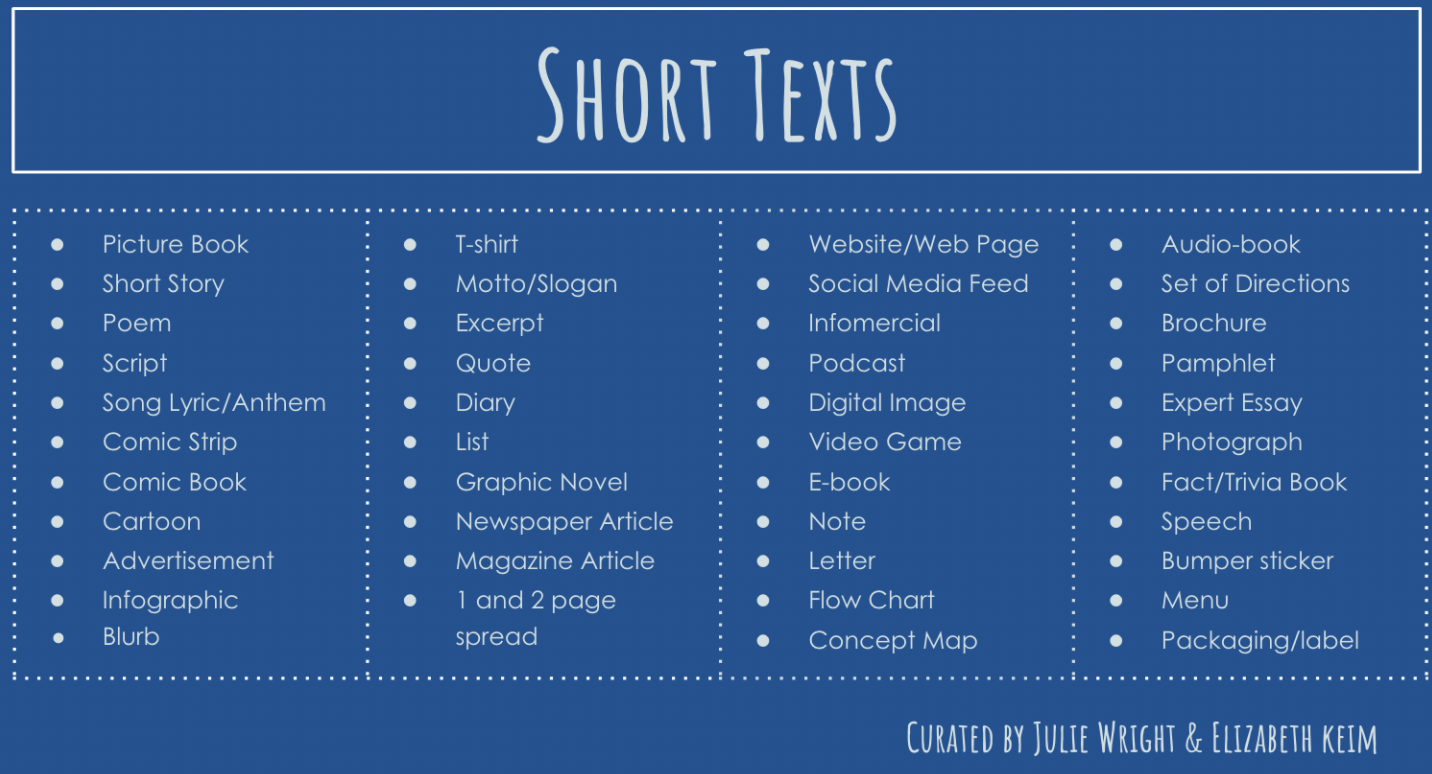Written by Julie Wright & Elizabeth Keim
A LITTLE BIT OF BACKGROUND
Back in early 2020 at the beginning of the pandemic, you may have caught our Short Texts at Your Fingertips Series focused on keeping kids reading, writing, and talking during remote learning. A lot has changed since then, although not as much as we hoped… Something that remains constant regardless of Zoom, social distancing and everything else in this new “normal,” is that kids continue to crave texts that entertain, inform and inspire them.
We are amazed at the number of educators worldwide who visit and revisit the original blog posts in this series. We understand why. Time is never on our side and having resources at your fingertips is essential. We’ve spent hours in classrooms and across screens with teachers putting these short text ideas into action and we’ve added on because, let’s face it, that’s what educators do. We revise, rethink, rework, and redo in order to meet the needs of our learners’ individual and collective needs and wants.
You know that we love all kinds of short texts. Some of our favorites are included in the graphic that follows:
The beauty of a short text is that it naturally invites readers to read, write and talk more! As we co-plan with colleagues, we select one short text and then dream up other possible short texts that will get kids jazzed up and engaged in our literacy work. From that noodling comes short text sets. Say it too many times and it becomes a mouthful. Stick with us and give some of these ideas a try and, before long, we think you’ll have the words, ideas, and texts rolling off your tongues too!
A SHORT TEXT SET AT YOUR FINGERTIPS: CEREAL BOXES
If you liked our Short Texts at Your Fingertips Blog Posts about Cereal Boxes, we think you’ll love these ideas about taking one short text about a cereal box and expanding it into a short text set. Just a reminder: If you don’t have this cereal at your fingertips, swap it out for another type and consider these texts and others to create your text set.
TRY THIS
Step 1
Use the back panel of the Cheerios cereal box for a shared reading experience. Use the back panel (and other panels too!) to explore the activities provided so that students can use different skills and strategies. Invite students to:
Complete a cloze activity similar to a “Mad Libs” and then read the finished piece out loud, showcasing fluent reading.
Play a word study game by making new words using the letters from “Crunch Time”.
Use their reading, math and critical problem-solving skills by solving breakfast equations while “Crunching the Numbers”.
Step 2
Ask students to select one or more short texts they’d like to explore independently or with a partner. In addition, you could:
Invite readers to find cereal boxes at home, bring them to school and set up a “cereal museum”. Students can label the displays with interesting facts.
Host a cereal tasting. It’s oodles of fun. Students can design a survey to find out peer opinions about the crunchiest, sugariest, tastiest cereals.
Encourage students to design their own cereal. Draw it, name it, describe it. Then share ideas with others.
GOING DEEP & WIDE
To go beyond cereal boxes, consider:
Naming the main ingredients listed on the cereal box and research and read to find out more about each.
Watching (or reading) some of the “how is this made?” genre of videos and talk about ideas worth remembering. Here’s a note catcher you can use if you are interested.
Picking a topic from the short text set and going a little further. Invite students to make a list of questions about the topic that pique their interests. Use this to jumpstart a mini-research project. This can be a short-term or long-term inquiry. Regardless, it will get kiddos reading, writing and talking galore!
STAY TUNED!
More about short texts and short text sets coming soon!


